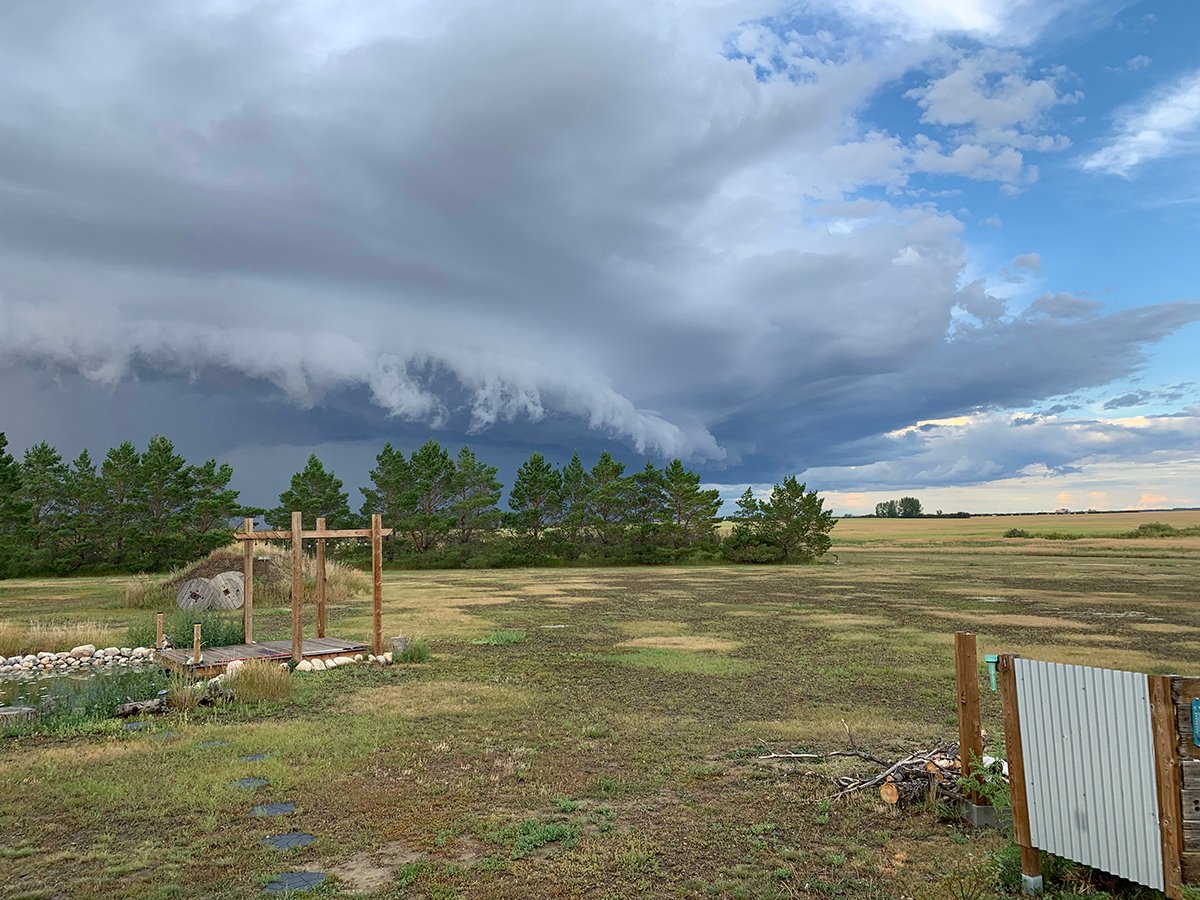Cow-calf optimism | Hog producers might have difficulty adapting
Big crops and big prices could equal record profits for many prairie farmers this year.
Grains, pulse and oilseeds farmers have only to keep their fingers crossed that weather, bugs and other crop-affecting factors remain reasonable.
But the situation is more complicated for cow-calf and hog producers.
Will high prices for feedgrains drive down calf and weanling prices this fall?
Will lack of grain and aggressive U.S. cow and sow liquidation drive buyers to Canadian animals in a year?
“There’s an awful lot of concern,” said Rick Bergmann of Steinbach, Man., a hog producer and vice-president of Manitoba Pork Council.
Read Also

Storm dynamics and extreme rainfall
Besides moisture, instability and orographic lift, the next biggest factor that contributes to heavy or extreme rainfall is storm dynamics.
“There are producers depopulating and shutting down barns.”
But cow-calf producer Harold Martens of Swift Current, Sask., predicted good times ahead for producers like himself.
“I’m optimistic about the price for fall, still,” he said, adding that many American Midwest farmers are selling cows and calves early because they have no pasture or feed for them.
That means the North American herd will be smaller in a year, but Canadian producers will have calves to sell.
“It’s definitely going to be a seller’s market,” said Martens, president of the Saskatchewan Stock Growers Association.
The Midwest drought that is ravaging U.S. corn fields, reducing wheat crops and threatening soybean yields brings both good and bad for prairie livestock producers.
Barley prices on the Prairies have shot high, which hurts feedlot operators, whose main input cost is feedgrain. Corn futures hit historic highs last week in Chicago at $8 per bushel.
But because the drought has also destroyed pasture growth and hay production, many midwestern farmers are shipping calves and replacement heifers into the feeding or slaughter markets.
Meanwhile, most cow-calf operators on the Canadian Prairies are insulated from the sudden surge in feedgrain prices. Pastures in most areas are in good condition and hay crops have been mainly large in recent years.
But the fall calf run might reveal a feeding sector in southern Alberta that is only now beginning to push down calf prices as it accepts the reality of high feed prices, said Calgary broker Errol Anderson of Pro Market.
“I think this is going to spill into the feeder side soon,” he said.
Martens said he’s worried about short-term pressure on calf prices as American farmers sell cows and calves. Feedlots won’t be paying much because they have little access to lower-priced feed.
However, in a few months, once the glut caused by U.S. herd downsizing passes, people will still want to consume beef and feedlots will have to draw it in from places that still have feed and cows, such as Western Canada.
If the market wants beef it will have to do that, which should mean higher prices for farmers, he said.
Alberta Beef Producers chair Doug Sawyer said he likes good calf prices, but worries about short-term calf price slumps during U.S. liquidation, followed by medium-term high beef prices that force beef demand lower.
“We’re losing too many cows,” said Sawyer.
“That’s good for calf prices in the short term, but it hurts your ability to maintain demand. We’ve been building markets all around the world, but you have to have the product to sell there.”
Hog producers could be particularly hard hit by high feedgrain prices, since they can’t rely on pasture or hay to get through the summer and often are not part of a mixed farm with its own grain supply.
And for the Manitoba industry, which produces millions of piglets per year, far more than can be fed on the Prairies, having no feedgrain in the U.S. Midwest could mean almost no weanling demand from the Americans.
“There’s a world of hurt (for both Midwest farmers who have no feed and Manitoba producers who can’t sell weanlings to them,)” said Bergmann.
Even U.S. farmers who are unlikely to be damaged by the drought are backing away from weanling purchases if they produce their own feedgrains.
“If they can get $8 per bu. for corn right off the combine, why would they want to feed pigs,” said Bergmann.
Bergmann expects the impact of the 2012 U.S. Midwest drought to carry on for a year, as critically low supplies attempt to rebuild.















